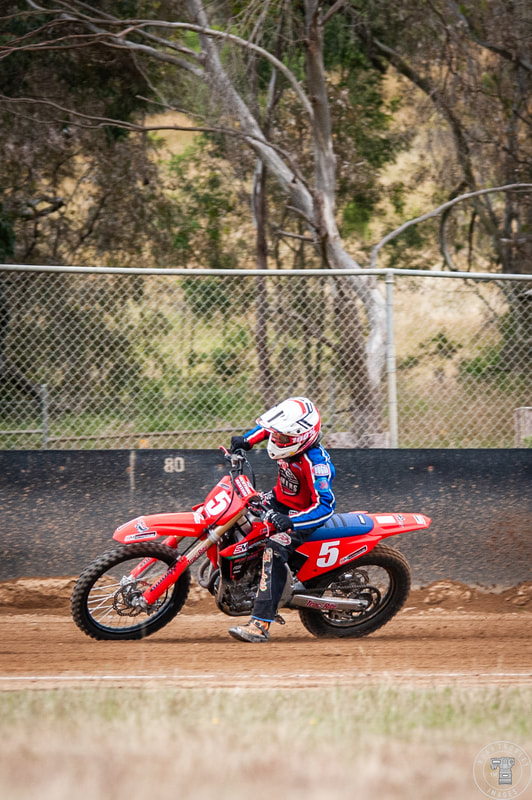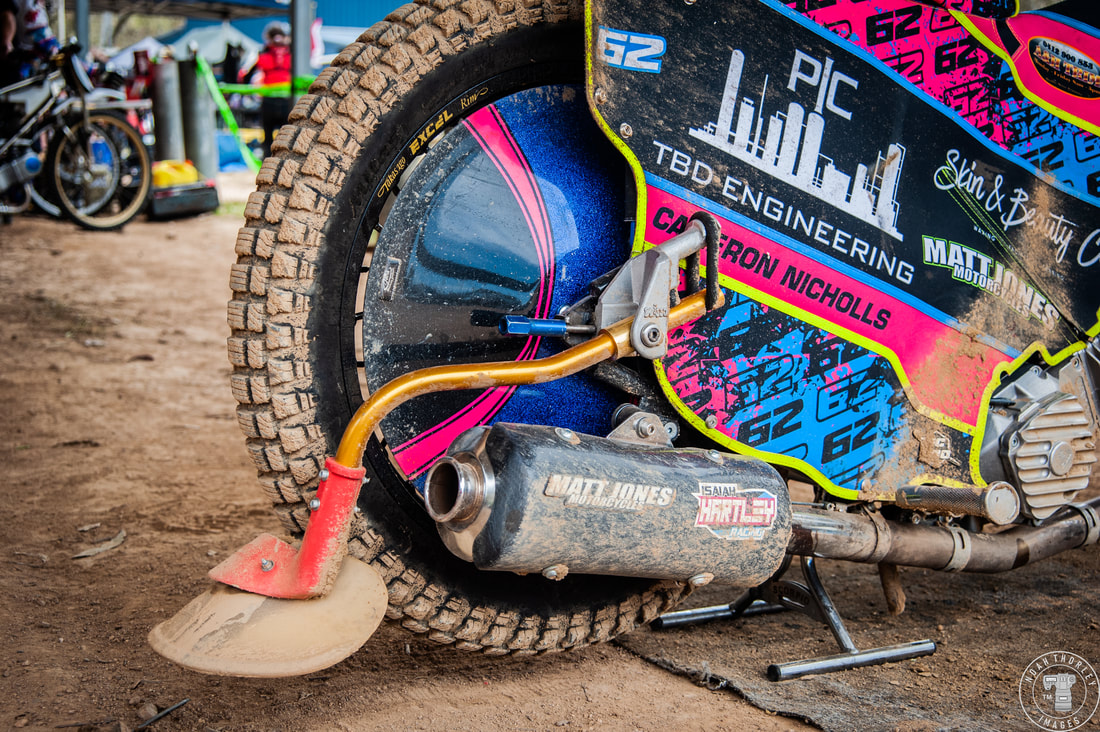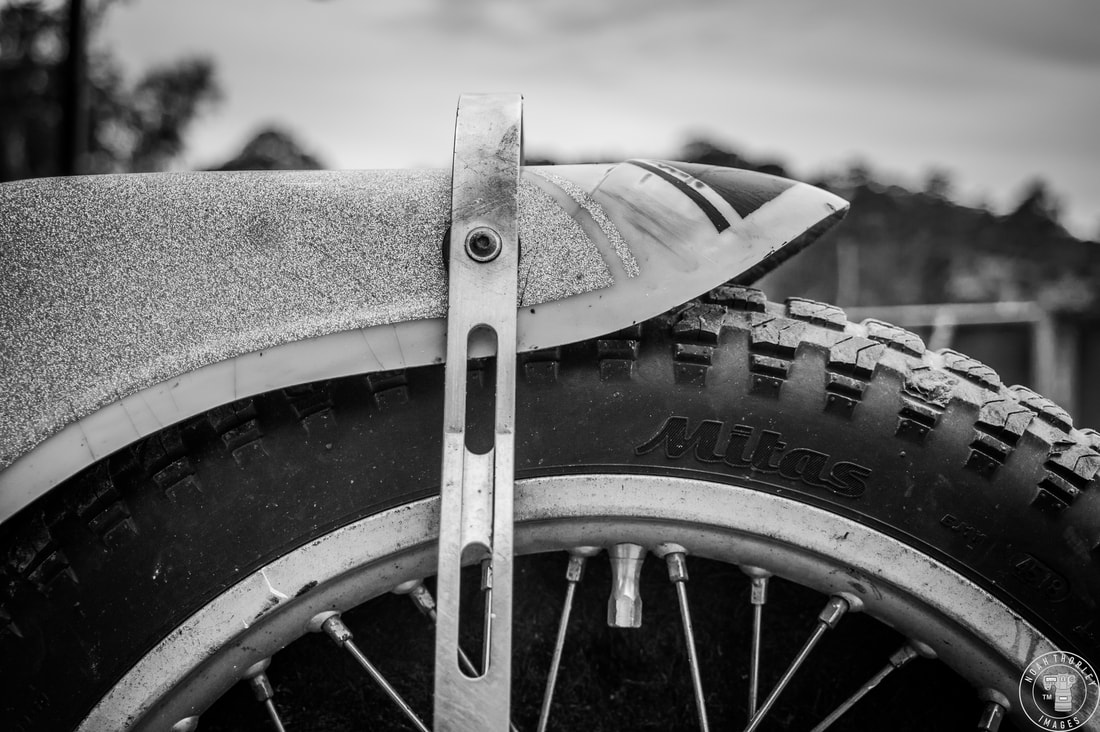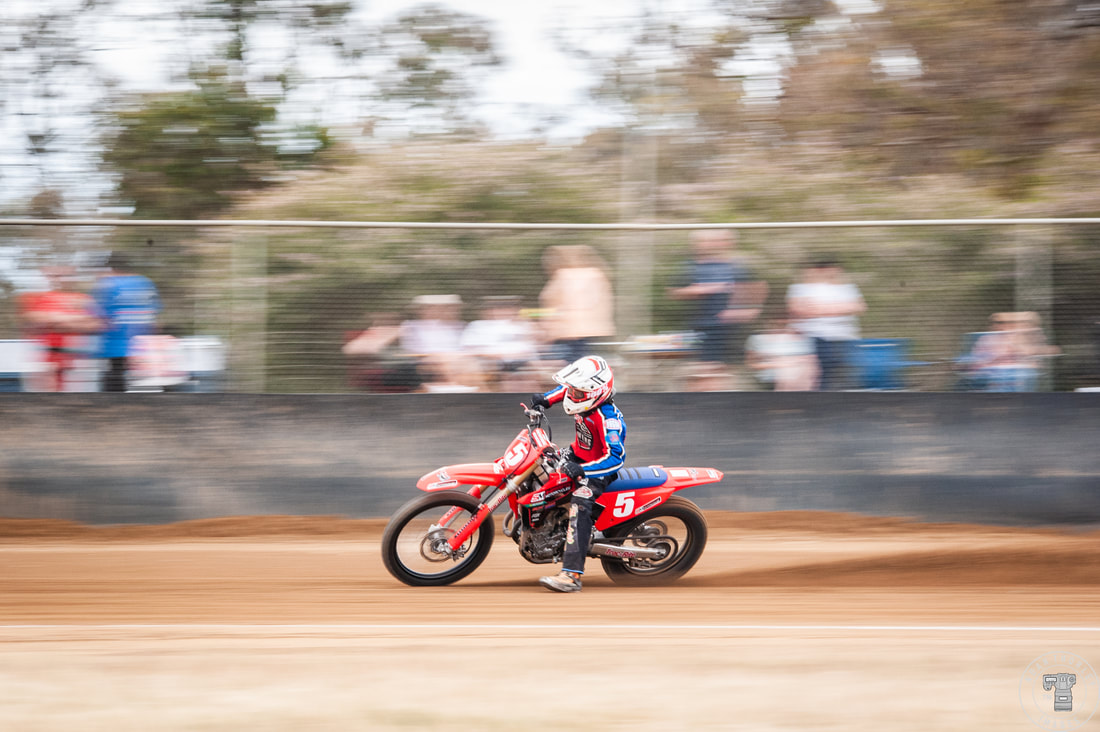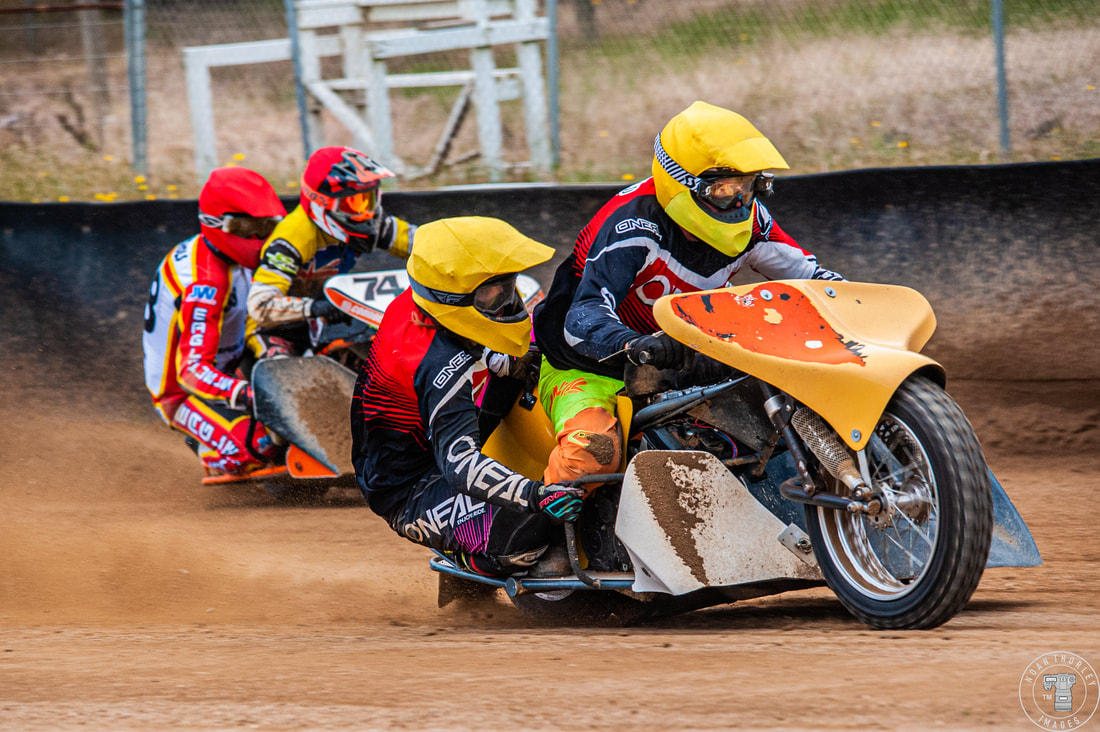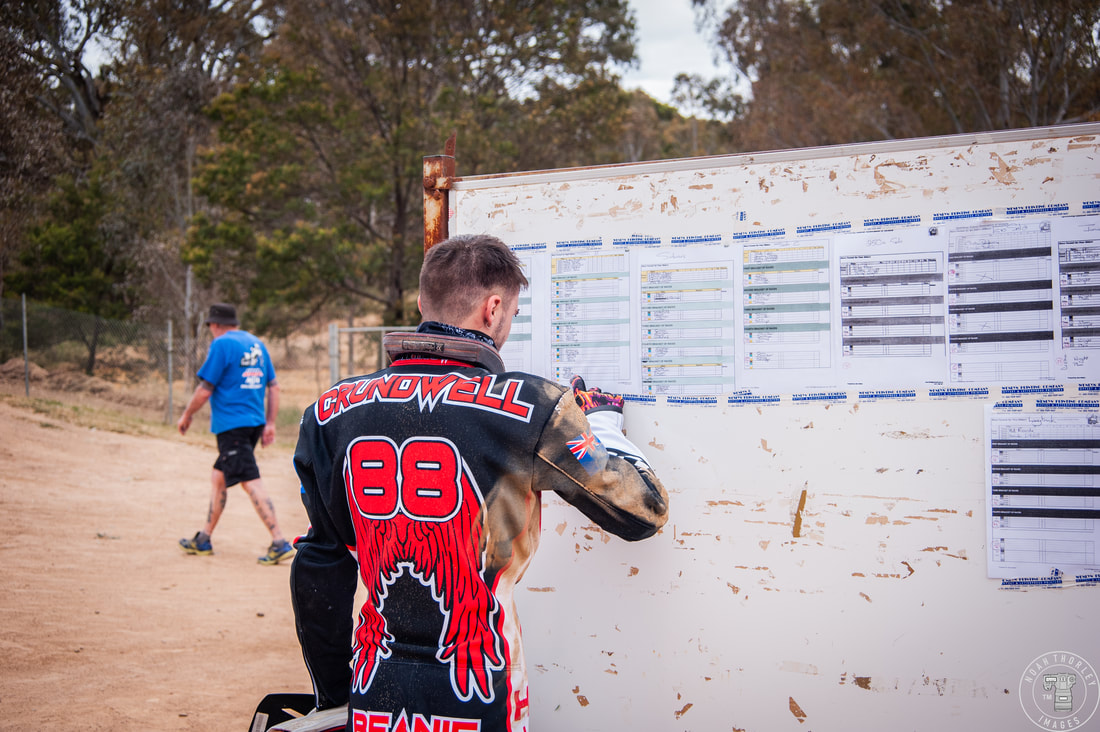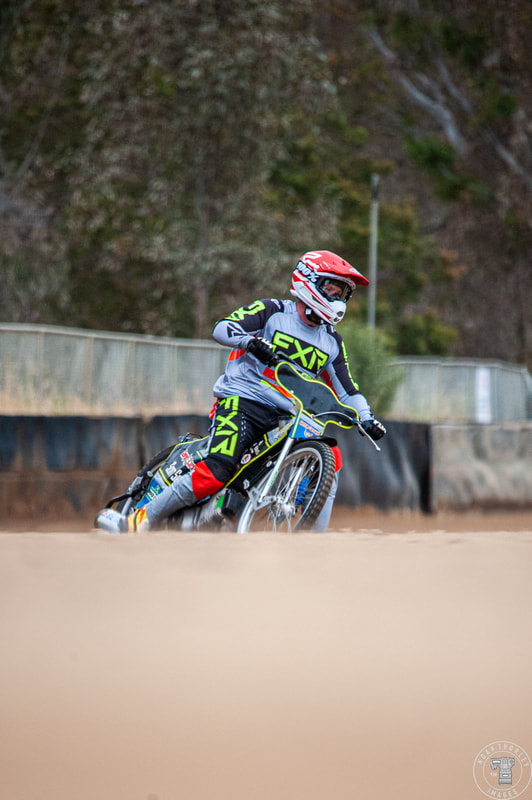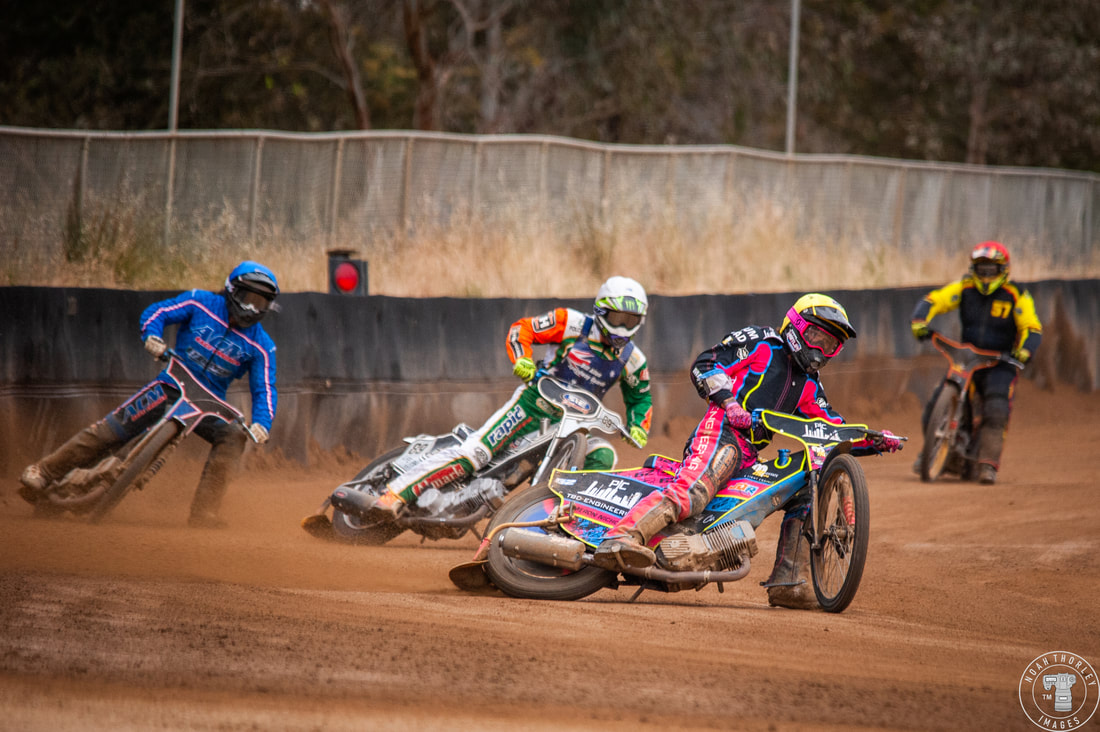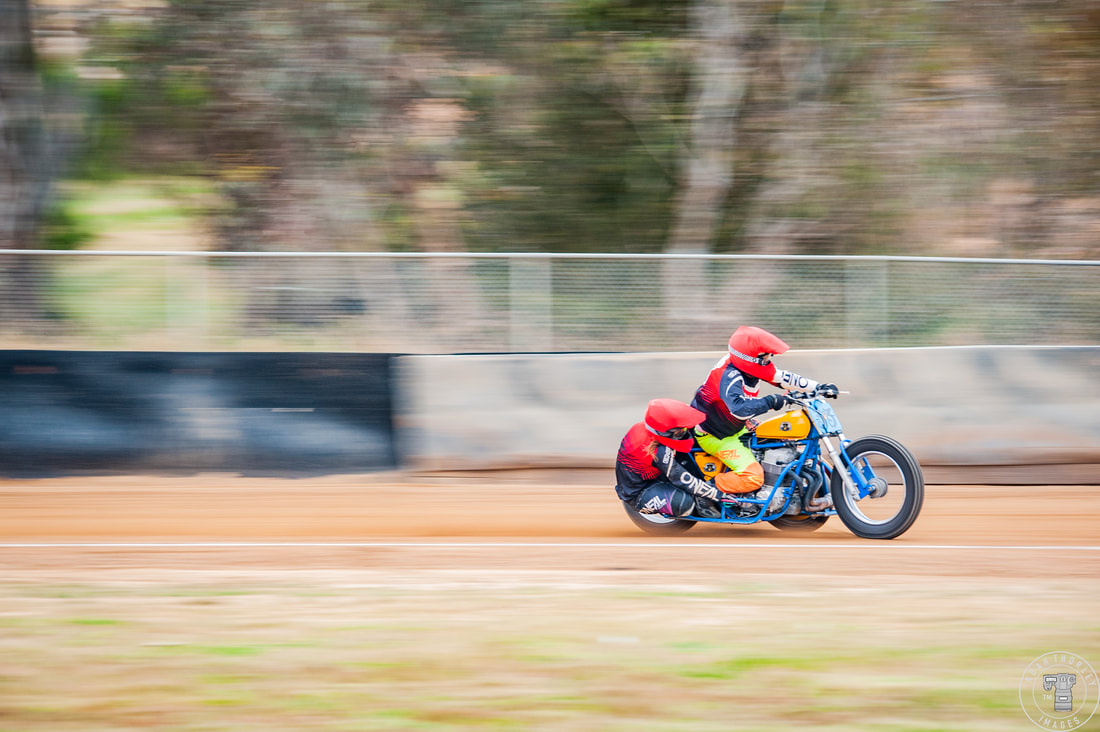|
Last year, although it doesn’t feel that long ago, I took a brief look at Motorcycle Speedway at the Broadford Motorcycle Complex. This time around would be a club day held by SSRAV, with not only Speedway motorbikes, but flat track racers and something I’ve wanted to photograph for a while, Sidecars! First let’s take a closer look at the speedway bikes and flat track racers. Both types of racing are quite similar, with riders hustling their bikes around a flat dirt oval, leaning into the 180-degree corners, foot to the dirt for stability, centimeters from other riders for a racing blur of four laps. So, what are the differences? Speedway bikes notoriously are fitted without brakes. The riders powerslide much more aggressively into the corners, and at the rear of their bikes are dirt deflectors to minimise the height of dirt flown up by the rear wheel, which is powered by a 500cc methanol injection engine. Flat track bikes however are fitted with brakes and are heavier and more powerful than their slimmer and lighter speedway brothers. The existence of brakes allows for different cornering techniques more comparable to standard road racing. Flat track racing originated in the U.S, racing on ovals made of wooden planks. Post WWII, they would make the switch to dirt for safety. Both of these categories of motorbike racing are spectacular to watch, riders dancing with danger, engine between their legs, hanging onto the steering, balancing their bike around others at full throttle for four very fast laps on loose dirt. However, there was one category I particularly wanted to check out, one that may even be more exciting than motorcycle speedway and flat track in every way. These are Speedway Sidecars. This mental sport originated here in Australia, with its popularity stemming from the first Australian Sidecar championship back in 1931 at Exhibition Speedway. Two bikers ride in unison to keep their sidecar on track with as much traction as possible. As the rider controls the acceleration and steering of these 1000cc powered sidecars, the passenger moves his body forwards, backwards and from side to side around the rear of the three-wheel sidecar to provide as much rear traction as possible, in the right place at the right time. Often these passengers will be centimetres from the ground, with their left leg being the highest part of their body off the ground. You must have extreme stamina and quick reflexes to push the rear of the sidecar to the ground to find grip on the loose dirt surface of the speedway. Unlike solo speedway, where contact between bikes is forbidden, contact is inevitable with these larger machines, however, you are not allowed to recieve a racing advantage, such as barging another sidecar off the racing line to make an overtake. Attending SSRAV's club day at Broadford only got me more interested in Solo Speedway and Sidecar racing. Maybe a trip to Gillman Speedway for the Australian Speedway Championships is on the cards? Bonus Gallery
0 Comments
Leave a Reply. |





